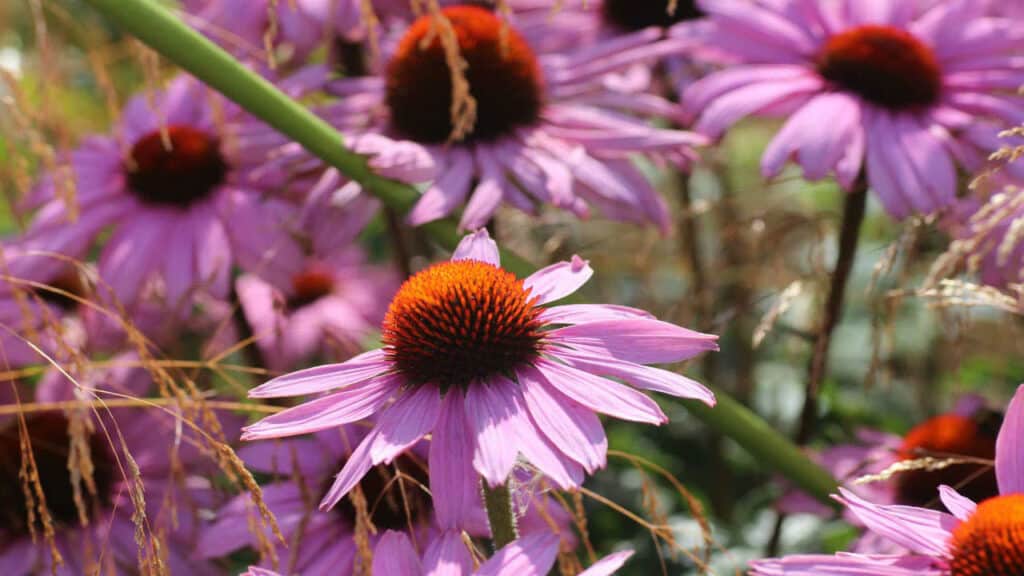Echinacea is another one of those plants that people have been using in traditional medicine for years but where you might wonder exactly what it does and if there’s science to back up the claims. Well, I’m always here to try to help when you’re wading through the ever-confusing information that accompanies most supplements.
There are ten species of echinacea altogether, but only three are used in medicine. They’re sometimes called coneflowers, and they actually belong to the same group of plants as the daisy. The natural habitat of echinacea is North America, particularly on the prairies and in areas of more open woodland. Europeans didn’t encounter them until the 1700s, but many indigenous people were already using them for medical purposes.
Tribes and nations including the Lakota, Pawnee Cheyenne and Kiowa used echinacea for various conditions, most notably in treating colds and sore throats, or as a form of pain relief. As they so often did, Europeans attempted to copy them. Eventually, pharmacologists would start analyzing the chemical content of echinacea.
This is where it gets tricky. We do know the different ingredients that make up an echinacea supplement now. There are alkamides, polysaccharides, phenolic acids, cichoric acid and a bunch of other complicated-sounding things. Some of these ingredients may have anti-inflammatory or immune-boosting properties. We’re just not sure how they all work.
Many people still use echinacea to try to alleviate colds. Others take it for headaches or for other minor pains and injuries. Most of the time, it’s not actively harmful (it’s not recommended for young children or if you’re pregnant/breastfeeding), but the evidence is still mixed on its overall effectiveness.
That doesn’t mean you shouldn’t take it. After all those hundreds of years of its use, it’s hard to believe there’s nothing behind the popularity of echinacea as a supplement. Do talk to your doctor beforehand, especially if you’re taking any other medication, just to make sure it’s appropriate for you and won’t interact with any other drugs in your system. Don’t keep using it if you experience any side effects.
You can buy echinacea as a tablet, extract, tincture, ointment or tea. The most common echinacea for supplements is Echinacea purpurea, but you could also try Echinacea angustifolia or Echinacea pallida. If you’re sensible about it, you may be able to experience some benefits, but there are no guarantees.




